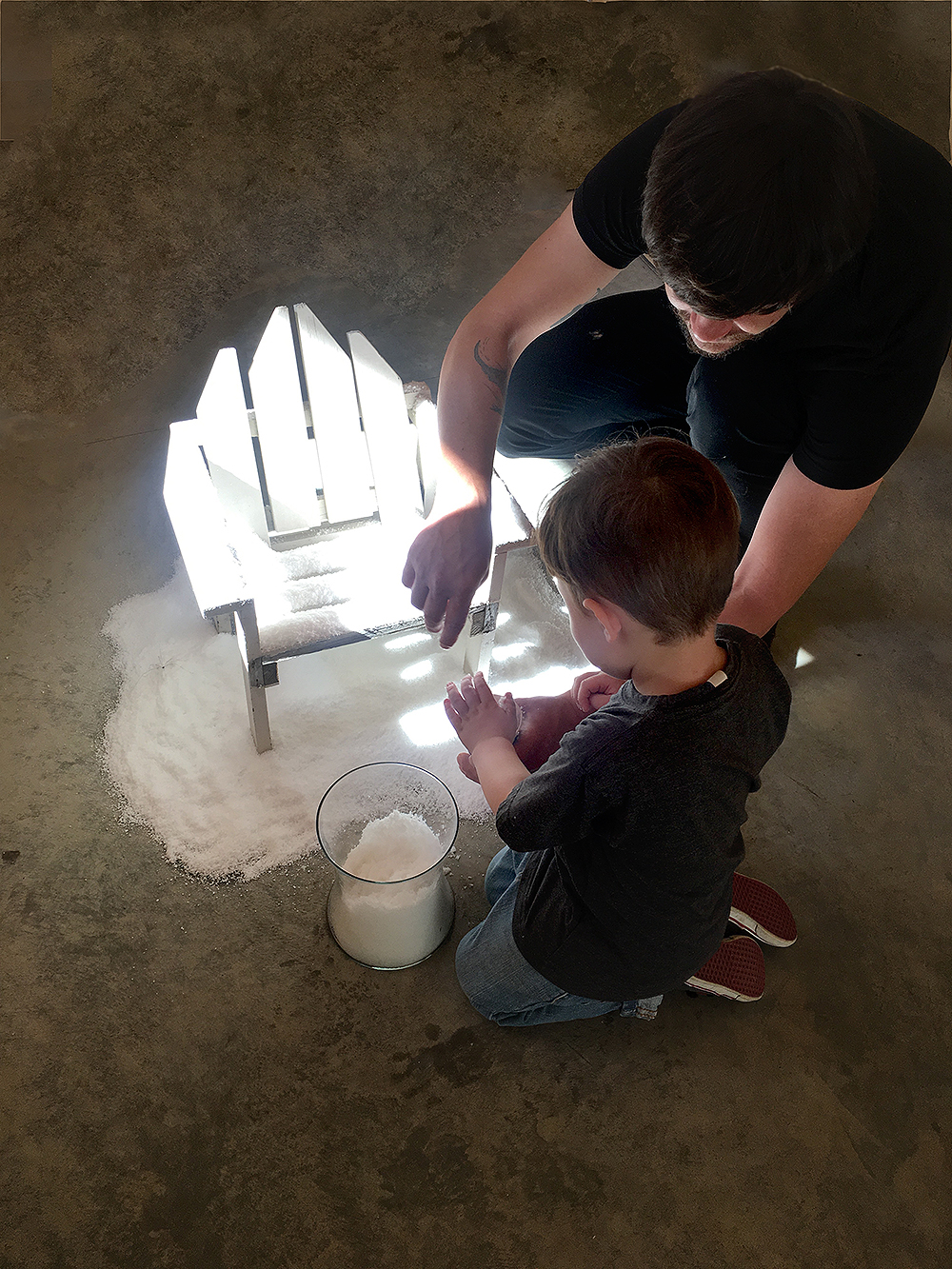How long does it take to melt a chunk of ice (~3 lb / ~1.5 kg) at a room temperature (~73 F / ~23 C) ?
Make a guess... 3 days / 1 day / 12 hours / 6 hours / 1 hour / 5 min...
For the duration of the month of September I was mostly doing just that, melting ice. The answer to my question is – about 5 hours! Just 5 hours. Now, think of it in the global scale. How many chunks of snow this big can be found around the world and how much snow is being melted just during one day due to the increasing temperatures of global warming? There are of course many factors that come into a consideration when you are trying to get a scientific approach in calculating the melted amount world-wide, but I will allow scientists to take care of this and just show you visually how fast the proses is happening and will give you a minute to think about this.
My installation evolved greatly since the first thought of it, and it will continues to change. At first I envisioned a large structure in the middle of the room representing the bottom of an iceberg. At the very end of it I was thinking on adding a chunk of ice which will melt and it will look like the whole big iceberg is melting. But for the final installation I ended up having many of ice chunks suspended in the air. And again the original idea was to allow all of that melted water to just stay on the floor and puddle and run freely, making it very uncomfortable for the observers. I would still want to make the installation this way with water on the floor. For this studio however it would be perhaps ok with one ice piece, but with estimated 48 liters (~105 lb) of water on the floor it would create a little flood. So I had to figure out how to keep all of this water content for 5-8 hours.
In total during the month of September I estimate that I created about 25 gallons (95 liters) of ice (the installation was active 5 days having about 5 gallons worth of ice each time).
Very fortunately at that moment I was working on another installation in the smaller room, wanting to make a snow blizzard, and I was looking for snow options to make this happen. Surely, it had to be fake snow since I wanted it to last for a while. I came across a material called Sodium Polyacrylate. This super absorbent white element was just perfect, it looked like snow from dry to slushy conditions, it could hold a lot of water in place. I decided to place this "snow" under the suspended ice. Looked great! But there was still a discovery to make: dripping melted water would create intricate patterns on snow. Because of the rotation of the heavy ice pieces and multiple dripping points, snow would record circular patterns, unique for each ice chunk.
These patterns acted like time records of the melt, drop by drop completing the circle. When ice was long gone, they remained on the snow surface, it was a small historical evidence of something previously present.
During two days when my studio was open for public at I-Park, I had a lot of visitors to show my installation to. We talked about environment and global warming on the final weekend of the September, which was unexpectedly hot, so unusual for CT for this time of year. Ice melted even faster than expected and it was very obvious to everyone that we are not living a fiction and the climate is changing. When you are gradually getting used to something new, you don't necessarily register the change. With my installation I was offering to take a moment and think of this change while observing drops of water separating from the melting ice and slicing the air to record the moment of change.
In the smaller room I created a different tiny installation with the same snow I used for the large one. I invited my visitors for a brief moment to experience a joy of playing with this magical white substance we call snow. Adults had fun, children did not want to leave.
Just 5 hours and it's not enough time to say everything what needs to be said. But this is a start and if you read these lines perhaps you also care about this as much as I do.






